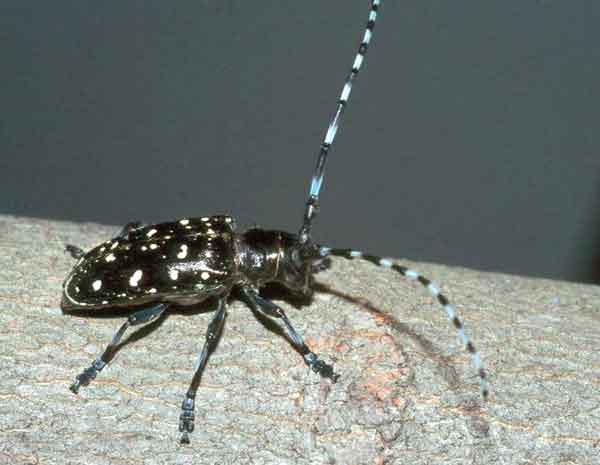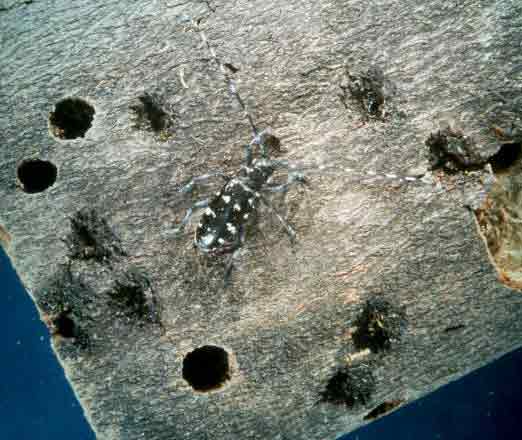Invasive
Species Information
The
following plants are invasive species (or are potentially
invasive) within the Norwalk River watershed. They
crowd out the region's traditional plantlife, converting
a healthy diversity of species into an unhealthy monoculture.
These plants are to be avoided, managed, or removed throughout
the watershed. (This list was compiled June 1998).
TREES
Norway Maple Acer platanoides
Sycamore Maple Acer pseudoplatanus
Tree-of-heaven Ailanthus altissima
White Mulberry Morus alba
Empress-tree Paulownia tomentosa
Amur Cork Tree Phellodendron japonicum
White or Poplar Cottonwood Populus alba
Black Locust Robinia pseudoacacia
SHRUBS
Japanese Barberry Berberis thunbergii
Russian Olive Elaeagnus angustifolia
Autumn Olive Elaeagnus umbellata
Winged Euonymus Euonymus alatus
Amur Honeysuckle Lonicera maackii
Morrow's Honeysuckle Lonicera morrowii
Tartarian Honeysuckle Lonicera tatarica
Blunt-leaved Privet Ligustrum obtusifolium
Common or European Privet Ligustrum vulgare
Wineberry Rubus phoenicolasias
Common or Smooth Buckthorn Rhamnus cathartica
Glossy or Shining Buckhorn Rhamnus frangula
Multiflora Rose Rosa multiflora
Japanese Rose Rosa rugosa
VINES
Porcelain Berry Ampelopsis brevipedunculata
Asiatic Bittersweet Celastrus orbiculatus
Japanese Honeysuckle Lonicera japonica
Mile-a-Minute Vine Polygonum perfoliatum
Kudzu Pueraria lobata
HERBACEOUS PLANTS
Purple Loosestrife Lythrum salicaria
Garden Loosestrife Lysimachia vulgaris
Japanpese Knotweed Polygonum cuspidatum
Yellow Flag Iris Iris pseudacorus
Common Reed Phragmites australis
Garlic Mustard Alliaria petiolata
Japanese Stilt Grass Microstegium vimineum
Leafy Spurge Euphorbia esula
European Water-milfoil Myriophyllum spicatum
Cottonweed Froelichia gracilis
Goutweed Aegopodium podagraria
Black Swallow-wort Vincetoxicum nigrum
White Swallow-wort Vincetoxicum hirundinaria
Invasive
Beetle Alert!
The
newest threat to trees and forests is the Asian Longhorned
Beetle (Anaplophora glabripennis).

©
Jeff Fengler/CAES
With
a preference for maples (sugar, Norway, red, silver, and
sycamore), it also attacks horse-chestnuts, black locust,
elms, birches, willows, poplars, and green ash. The only
known method of controlling it is to cut down the infested
tree and chip or burn all the wood. Early detection and
swift action may prevent the spread of these beetles which
came into the US and NY in solid packing crates from China
and which have done serious damage to trees in central Park
and elsewhere. So look for these signs.
The
adult female digs or chews out a cup or niche in the bark
for each of the 30-70 eggs she lays in the spring. These
hatch in 10-15 days, and the larvae burrow into the tree
- often making the tree ooze sap and creating piles of sawdust
in the crotch of branches or at the base of the trunk. Tunneling
girdles the branches and over time leads to dieback and
the death of the tree. After pupating, the emerging adults
burrow out -leaving an almost perfectly round exit hole
about 1/2" in diameter.

©
Jeff Fengler/CAES
Adult
beetles are 3/4-1 1/4" long, black with white spots on the
back, with black-and-white bands on long antennae, and blueish
feet. They are most evident May through October. If you
discover them, call your local Tree Warden and the Cooperative
Extension System (203-974-8474). For more information, access:
http://www.
aphis.usda.gov/oa/alb/alb.html.
Mile-a-Minute
Vine Alert!
Polygonum
perfoliatum, the Kudzu of the north, grows 6" a day, prefers
sunlight, has stalks with prickers that stick to other plants
and form dense, smothering mats. It has both triangular
and round leaves and purple berries. Control this new invasive
threat by mowing or hand-pulling the plant before seed sets.
Put the plants in a black plastic garbage bag in the sun
and let them thoroughly heat and rot. Wear leather gloves
and long sleeves when you're on the attack!. For more information
log onto www.eeb.uconn.edu
to learn more about this and other invasive species that
need everyone's attention if our native plants are to survive.
Unlike established wetland invasives, such as purple loosestrife,
we may be able to stop this one on its race east from Greenwich
and New York State.
Pervasive
Invasive: Japanese Barberry
Japanese
barberry (berberis thunbergii ) is one of the most hardy,
pervasive invasive plants. It has no known predators (deer
don't browse it), berries are easily spread by water or
birds, and it will grow almost anywhere in varied soil conditions
and even in very minimal light. It is the most pervasive
shrub of woodlands and old fields and outcompetes native
flora for sun, water, and nutrients. One study even showed
that it produces a chemical that discourages earthworms
and thereby hinders enrichment of the soil. Yet it is one
of the easiest invasive plants to recognize and remove,
and awareness of it in the landscape may lead the enlightened
viewer to identify and eliminate two other pervasive invasives:
multiflora rose and winged euonymus.
Japanese
barberry is easily recognized in every season. The compact
woody shrub grows 2-6" high and has a short vaselike form.
Its slender, arching stems have untoothed leaves with a
single thorn below each leaf cluster. Its leaves turn a
deep, orange-red in the fall. Red oblong 1/2" berries are
born singly or in clusters along the stem. Its bisexual
flowers are pale yellow. Inner bark and roots are a vibrant
deep yellow. Typical of alien plants, it leafs out earlier
than other plants in the spring, and its leaves stay on
later in the fall.
Physical
removal - by long-handled shovel, mattock, or Weed Wrench
(for the toughest, largest plants or those wedged between
roots or in a stone wall) - is the proven and chosen method
of eradication. The most stubborn plants can be cut off
low on the stem and treated with Roundup™, but be careful
not to let this nonselective systemic herbicide contact
water or other desirable vegetation. Before digging the
plant, its berries should be removed and packaged in a ziplock
bag, that later can be thrown out with the garbage. When
dug, the bushes should be shaken to remove excess soil and
then upended to provide shelter for wildlife while the roots
dry out and die. The hole where the plant was removed should
be filled, tamped down, and covered with leaves to prevent
other invasive seeds from entering the disturbed soil. The
resulting natural-looking terrain will be attractive and
encouraging.
Leather
work gloves and a tough work clothing should be worn to
minimize pricks during the elimination process.
Spring
is a good time to attack plants on higher, drier ground
for better footing and fewer insects. Fall is a better time
to attend to the previously wet areas. Target areas along
streams or trails first to minimize future seed dispersal
by water or birds.
Check
up on the areas where you've worked for the next few years.
Any emerging barberry should be small and quite easy to
pull up by hand.
Two
great new sources of information on invasive plants:
- Invasive
of the Month Really helpful information and pictures
for identification and control.
- Invasive
Plants in Winter In the menu in Need to Identify pull-down
menu: click on Invasive Plants in Winter; then Hot to
Choose a View, click on Browse – Show ALL; then hit the
“Start the ID!”

